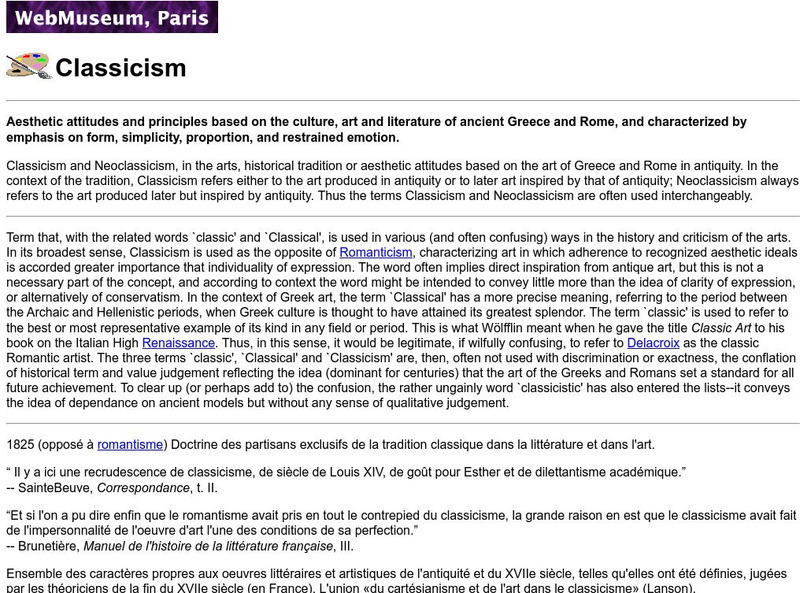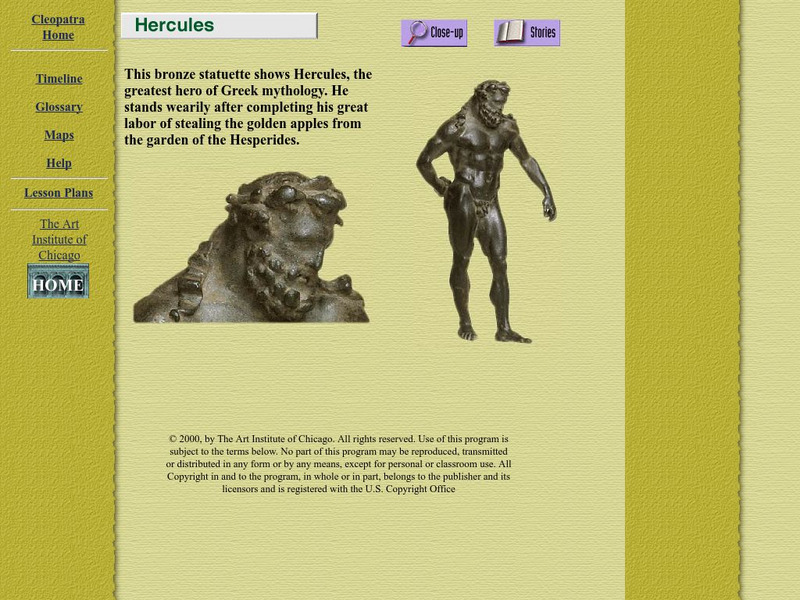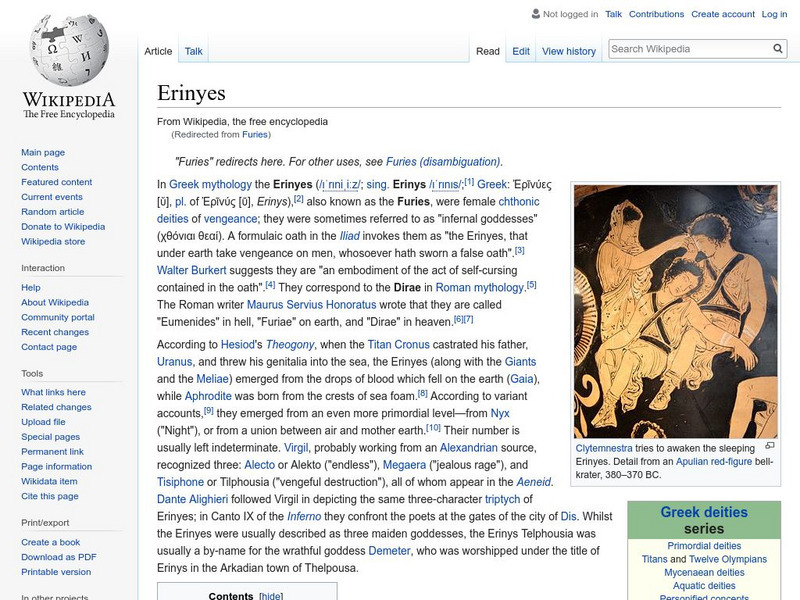Curated OER
Drawing of Corinthian Capital. d.s. Robertson, Greek and Roman Architecture
Illustrated dictionary entry for Greek standard orders of stone architecture. Provides explanation of the three architectural types as well as picture examples.
Art Institute of Chicago
Art Institute of Chicago: Art Access: Roccoco to Realism
From the early 18th to the mid-19th century, dynamic transformations in European art mirrored turbulent political and social changes, including revolutions, imperial conquests, and the emergence of the modern industrial age....
British Library
British Library: Discovering Literature: Neoclassicism
Writers and craftsmen including Alexander Pope, John Dryden, Jonathan Swift, and Josiah Wedgwood found inspiration in the classical period. This article explores how their works adopted the style, genres, aesthetic values, and subjects...
Khan Academy
Khan Academy: What Is Asia?
"Asia" is a term invented by the Greeks and Romans, and developed by Western geographers to indicate the land mass east of the Ural Mountains and Ural River, together with offshore islands such as Japan and Java. Culturally, no "Asia"...
Curated OER
Greek Lamp
This site takes a brief look at aspects of ancient Roman private life. It examines where the Romans lived, describes some of their household goods, and includes clear color pictures. Links at the end of the article provide information on...
Curated OER
Etc: Maps Etc: Roman Power After the Samnite Wars, 290 Bc
A map of the Roman territories on the Italian Peninsula after the Samnite Wars in 290 BC, showing the cities of Rome, Beneventum, Capua, Naples, and Ausculum, including the territories of Latium, Etruscans, and Samnites under Roman...
ibiblio
Ibiblio: Web Museum: Classicism
This site gives an overview of classicism, then proceeds to compare it with neoclassicism. The article then explores the roots of the term "classicism" and its inherent meaning to the Greeks and Romans. Contains a French translation.
Other
Edkins Family Index Page: Minerva Goddess of Wisdom
Quick overview of Minerva - her role in Greek society, and her support of Perseus when he killed Medusa.
Curated OER
Unesco: Greece: Pythagoreion and Heraion of Samos
Many civilizations have inhabited this small Aegean island, near Asia Minor, since the 3rd millennium B.C. The remains of Pythagoreion, an ancient fortified port with Greek and Roman monuments and a spectacular tunnel-aqueduct, as well...
Other
Parker Middle School: Relief Sculpture
This resource presents a general history and links to everything about relief sculpture. There are image examples and links to Greek, Ancient Roman, Egyptian and Chinese sites.
Other
"A Well Trimmed Ship", the Republican Legacy of Polybius
A two-part paper, the first of which is a biography of Polybius, a Greek, who wrote a history of the Roman Republic. The second part discusses his work and his admiration of Roman virtues and the government of the Roman Republic.
Art Institute of Chicago
Art Institute of Chicago: Hercules
Examine a bronze statuette of Hercules, a Roman copy of a Greek original, and watch two accompanying videos. One explains who Hercules was and the other explains how the statue was cast using the lost-wax method.
Encyclopedia Mythica
Encyclopedia Mythica: Hermes
Well-written article tells of several of Hermes' (Roman name "Mercury") feats, including killing Argos.
Wikimedia
Wikipedia: Erinyes (Furies)
Encyclopedia article that discusses the "Erinyes or Eumenides (the Romans called them the Furies) [who] were female personifications of vengeance." Provides a summary of their role in Greek mythology, a discussion of their use in...
Encyclopedia Mythica
Encyclopedia Mythica: Hera
This site provides a quick explanation of Hera's (Roman name "Juno") role in the Olympian society. Her symbols and domain are also revealed.
Khan Academy
Khan Academy: Bronze Head From a Statue of the Emperor Hadrian
Hadrian (reigned 117-138 C.E.), once a tribune in three different legions of the Roman army and commander of a legion in one of Trajan's wars, was often shown in military uniform. He was clearly keen to project the image of an ever-ready...
CommonLit
Common Lit: Text Sets: Mythology
This is a collection of 18 Grade-Leveled texts (6-12) on the topic of Mythology. From prehistory to the present, mythology has played an essential role in how humans interact with and understand the world around them. Explore a world of...
Curated OER
Educational Technology Clearinghouse: Clip Art Etc: Accubatio
The act of reclining at meals. The Greeks and Romans were accustomed, in later times, to recline at their meals; but this practice could not have been od great antiquity in Greece, since Homer always describes persons as sitting at their...
Curated OER
Educational Technology Clearinghouse: Clip Art Etc: Acinaces
A Persian sword, whence Horace speaks of the Medus acinaces. The acinaces was a short and straight weapon; and thus differed from the Roman sica, which was curved. It was worn on the right side of the body, whereas the Greeks and Romans...
Curated OER
Educational Technology Clearinghouse: Clip Art Etc: Cameo
Cameo, a term applied to gems of different colors sculptured in relief. The art of engraving on gems boasts of high antiquity, having been practised with various degrees of success by the Egyptians, Greeks, and Romans.
ArtLex
Art Lex: Hellenistic Art Period
Artlex.com defines and describes the Hellenistic period in Western art. Features include links to illustrated examples, artists, and related terms.
United Nations
Unesco: Historic Centre of Naples
This World Heritage website features Naples, first founded by the Greeks in 470 BC as Neopolis. Found here are a description of its long history, links, a map, documentation, photos, and any indicators of threats to its integrity.
Travel Document Systems
Tds: Libya: History
Read about the history of Libya from its beginnings as a Phoenician outpost through its control by many governments, its eventual independence, and current government. Information is from the U.S. State Dept. Background Notes.
Princeton University
Princeton University: The Art Museum
The Art Museum at Princeton University has a permanent collection ranging over time from ancient to contemporary and from the Mediterranean to Western Europe, China, Latin America and the U.S. Greek and Roman antiquities and Roman...











